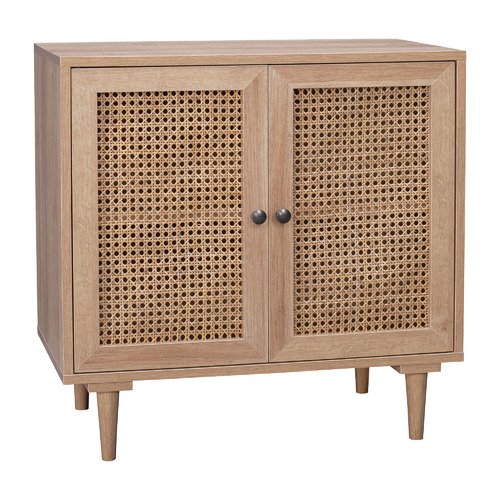Cane vs. Rattan Furniture: What’s the Difference?
Looking for a sustainable material with a rustic, coastal, boho or cottage vibe?
Cane and rattan furniture are popular choices, but they’re made from different materials and have distinct characteristics. Read on, and you’ll also learn about Wicker!
In a nutshell, it’s one plant - manufactured to create two unique materials.
The primary difference between cane and rattan furniture lies in each material's appearance, strength, and durability. Cane is thinner and more delicate, often used for decorative elements. At the same time, rattan is sturdier and can be used for structural and weaving purposes, making it suitable for a broader range of furniture types.
If sustainability is important to you - choose Rattan
Rattan is a fast-growing, renewable palm that grows in tropical regions. It grows faster than trees, and it is easier to harvest and transport than timber. Rattan can be fully grown and harvested within two years, compared to some hardwoods, which take up to 20-30 years. Making rattan a sustainable and environmentally friendly product.
Unlike bamboo, which is hollow and without the ability to bend, rattan is light, durable, and relatively flexible. The core of the rattan plant is solid, making it a sturdy material for constructing furniture frames. Rattan furniture tends to have a bulkier and more substantial look because it is used for both the frame and the weaving.
If you like a more rustic or tropical appearance for your larger furniture peices like chairs, sofas, and tables - choose Rattan.
Rattan is known for its strength and durability. It is a resilient material that can withstand a lot of wear and tear. It’s often used in both indoor and outdoor settings because it’s relatively low-maintenance.
The term Cane refers to the strands of rattan’s outer skin or peel. Cane strands are smooth, flat, light, and mold-resistant. Cane is extremely strong and durable for making baskets or wrapping the joints of rattan furniture.
If you are looking for furniture that has a lighter and more delicate appearance - choose Cane.
Cane webbing often features intricate patterns and is often used for smaller decorative pieces like chair seats and backs and decorative panels.
Cane is less durable than solid rattan and may not be suitable for heavy-duty use. It can be prone to splitting or breaking if subjected to excessive weight or stress. It requires more delicate care because of its thinner and more fragile nature. It’s best suited for indoor use and should be protected from excessive moisture and direct sunlight.
Your choice between the two will depend on your aesthetic preferences, intended use, and maintenance requirements.
An interior designer can always help you to choose the pieces that best suit your home design.
Rattan vs. Cane was solved, so what is Wicker?
Rattan, cane and wicker are terms that have been so frequently interchanged that it can be very confusing. Now that we’ve explained the nuances of rattan and cane, we must explain that rattan and wicker are not the same.
Rattan is a material, while wicker refers to a weaving technique.
The term "wicker" refers to the method of weaving rattan, cane, willow, bamboo, and even synthetic materials like resin to create furniture, baskets, or other decorative items.
Wicker weaving involves weaving flexible strands or strips of material together to create a sturdy and decorative pattern.
Furniture that includes wicker weaving comes in a wide range of styles and aesthetics, making it suitable for lots of design preferences. It can have a rustic, cottagecore, coastal, or bohemian vibe, depending on the material used and the weaving pattern.
Synthetic resin wicker is better for outdoor furniture because it's weather-resistant and low maintenance, while natural wicker materials like rattan or cane are more commonly used indoors.
Natural wicker materials require more care, including occasional cleaning and protection from moisture and direct sunlight.



